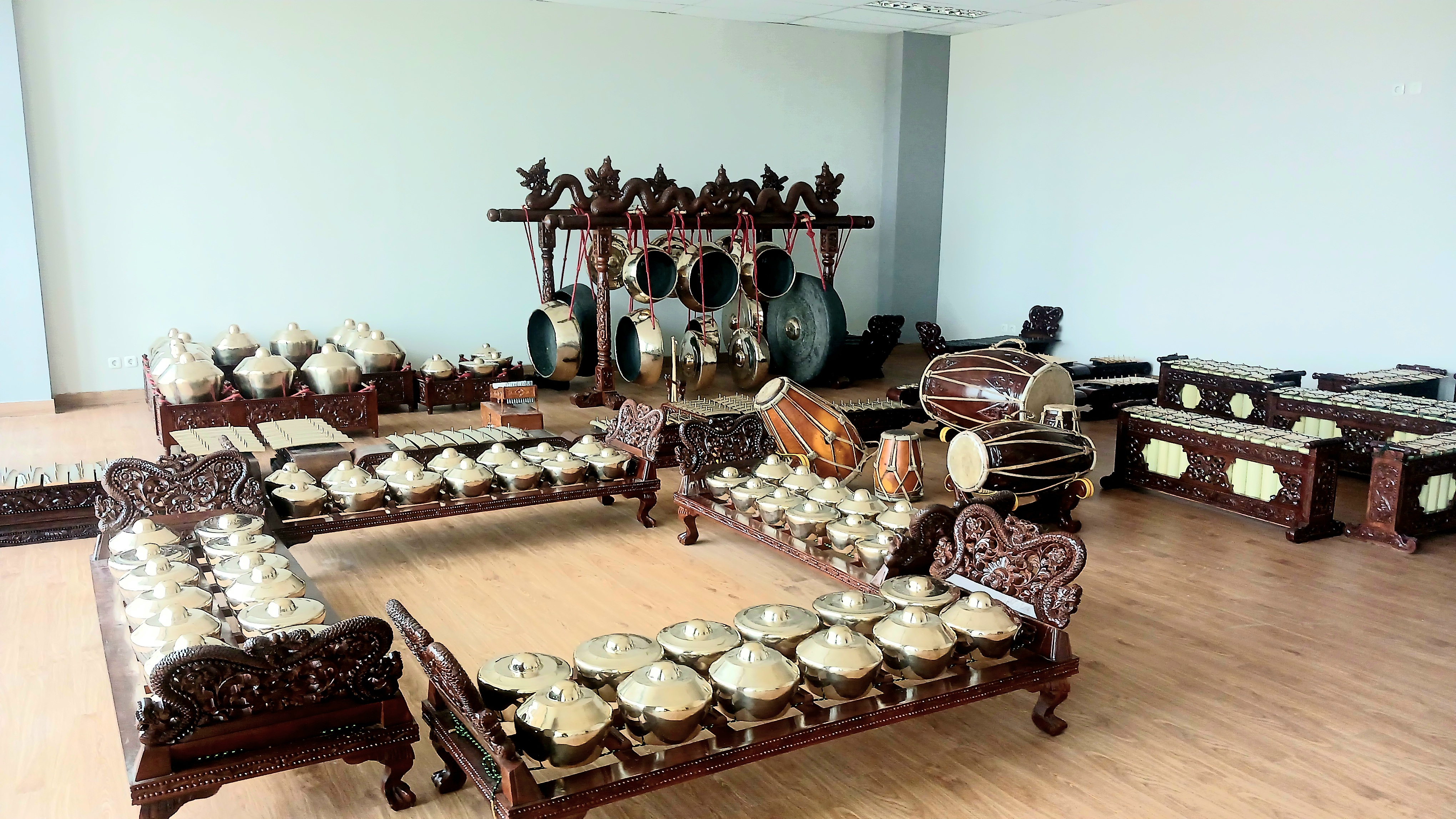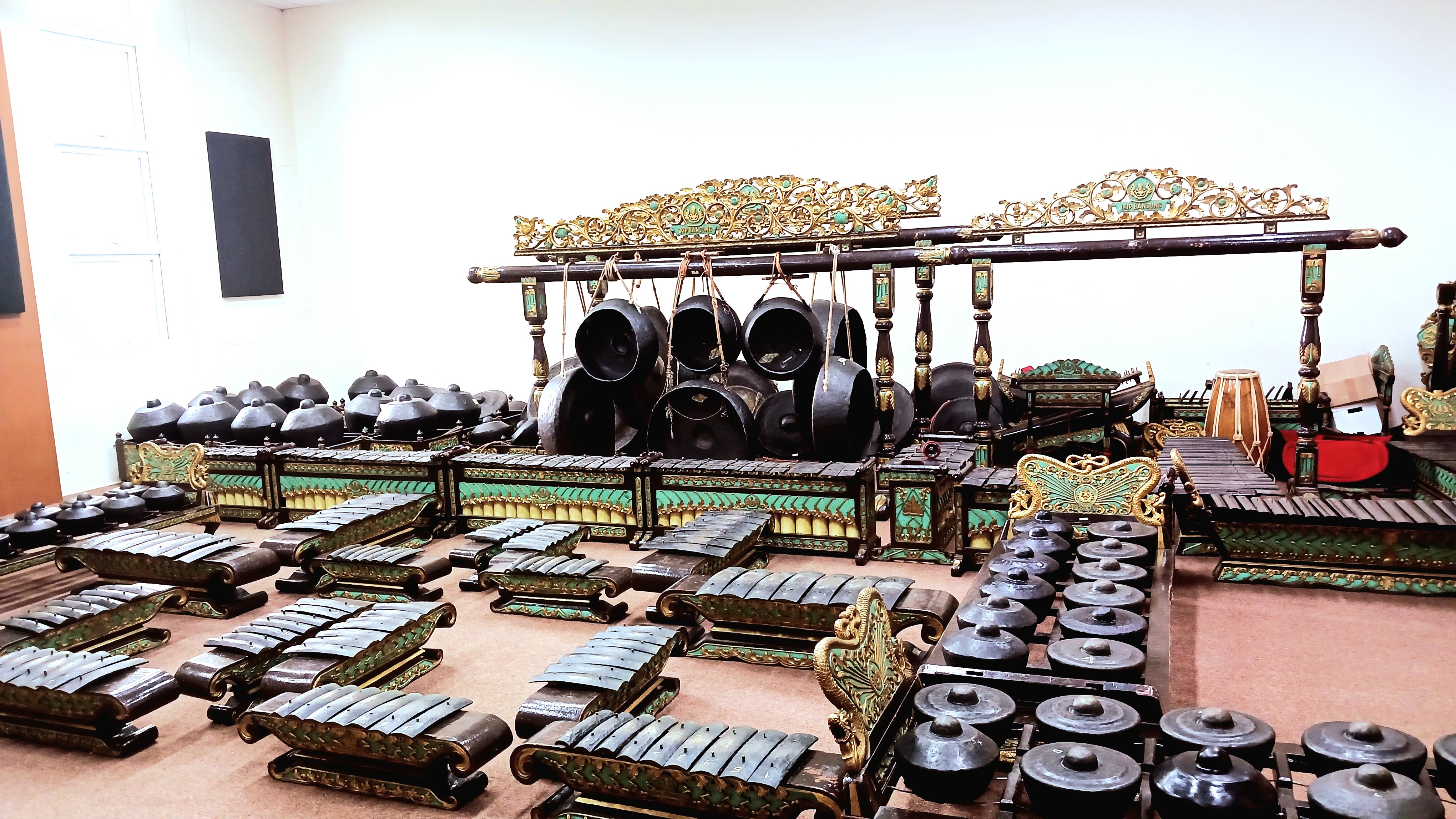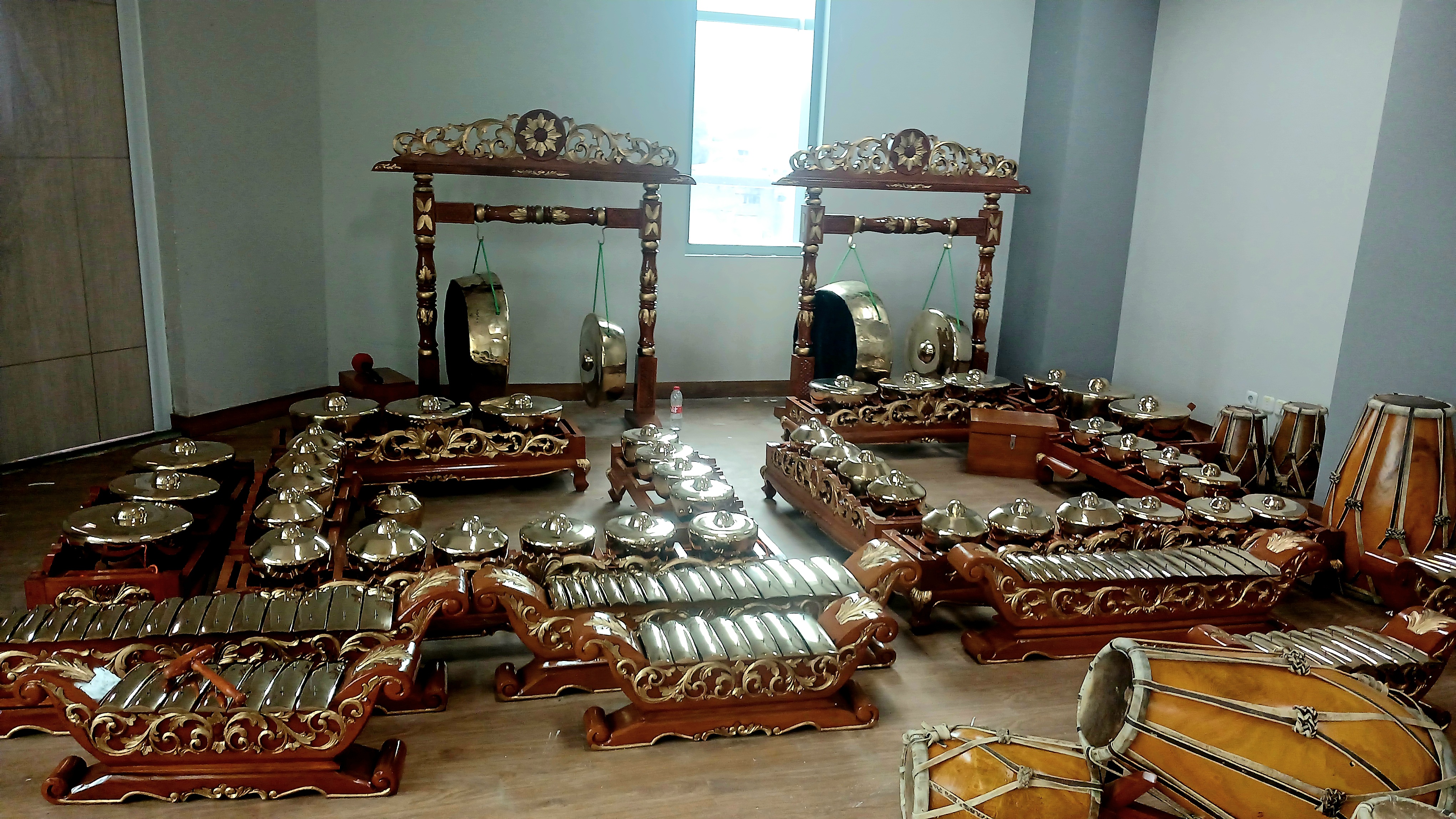A Guide to the Sundanese Gamelan Tuning (Laras) for Ableton Live
By Iwan GunowanThe tuning systems (laras) of Sundanese (West Java-Indonesia) music are quite diverse in their characteristics and types. This is due to at least three aspects: there is no standard reference pitch- the pitch of the base tone can vary, the location of the pitch center in a scale, and the difference in the interval structure in each scale used (J. Kunts, 1973).
There are two types of gamelans that have been used to develop tuning theory in Sundanese music, the Pelog Salendro gamelan and the Degung gamelan. Gamelan Pelog Salendro is actually a term used to identify Sundanese gamelan instruments adopted from Javanese gamelan (central Java). Usually, the Pelog Salendro instruments imported from the central Java region have their tunings changed to suit the auditory preferences of Sundanese musicians. However, sometimes Javanese gamelan tunings are retained and used for other Sundanese performance needs, for example the various pieces created by composer Koko Koswara called "Gamelan Wanda Anyar"/New style gamelan (Saiful, Masunah and Milyartini, 2024). Alternatively, gamelan Degung is a smaller set of instruments with a different configuration of instruments and tunings, which is then referred to as laras Degung.
Gamelan Pelog Salendro
A Gamelan Pelog Slendro is composed of instruments in two different tunings: Pelog and Salendro. Pelog has three types of five-tone modes (Jawar, Liwung, and Sorog) derived from a seven-tone unequally distributed tuning, while Salendro is a five-tone tuning with notes roughly equally distributed across a standard octave.
There are two types of Gamelan Pelog Salendro, namely Gamelan tumbuk Nem and Gamelan tumbuk Mo. Gamelan tumbuk Nem means that the Pelog and Salendro scales have the same Nem/Tugu tone (tumbuk=match). While tumbuk Mo means that the Mo/Loloran tone has a match between the two scales. Gamelan Pelog Salendro Tumbuk Mo is rarely found in the Sundanese region, so the gamelan used is gamelan Tumbuk Nem.
Gamelan Pelog Salendro consists of various types of instruments: metallophones (Goong, Kenong, Bonang, Saron, Selentem, Gender) and xylophones (Gambang), each tuned in both pelog and salendro. In addition, there are drums (Kendang, Bedug), stringed instruments (Rebab, kacapi/siter), wind instruments (Suling, Tarompet), and vocals (singers). For stringed instruments, and wind instruments, usually only one instrument is used but has the flexibility to play both tunings.
Salendro and multi-mode music in Sundanese gamelan
In the Sundanese region, musical repertoire that only uses the Salendro scales is very common. Further, a solo melody will often be played using a different scale in a practice known as multi-scale composition; although the gamelan ensemble is in Salendro, the melody performed by the soloist Sinden (Singer)/Rebab (bow instrument) may use a different related scale (For example: Album Kliningan Klasik - Nunung Nurmalasari). These related scales are referred to as modulations and are based on the Salendro scale. That is why R.M.A Kusumadinata (1969), formulated that Salendro tuning is ‘the mother’ of other existing tunings.
Note that the Salendro tuning is based on the pentatonic system with the names of the tones being: T=Tugu, L=Loloran, P=Panelu, G=Galimer, and S=Singgul. Judging from the structure of the tone intervals, there are two types of Salendro tunings, the first is Salendro Padantara (hematonic) whose tone intervals have the same distance, and the second is Salendro Bedantara (anhematonic) whose tone intervals have different distances. The difference is formulated by Kusumadinata as in the following table.

Table 1. Difference between Salendro Padantara and Bedantara intervals according to Kusumadinata
These pads let you hear and play with the tunings Salendro Padantara and Salendro Bedantara. Compare the various pitches and listen for the similarities and differences.
Salendro Padantara
Salendro Bedantara
On the basis of the two types of Salendro tunings above, the interval distances of five other related tunings used by solo instruments, namely Degung Dwi and Tri Suara, Sorog/Madenda, Wisaya, and Mataraman/Mandalungan, were found. Along with its basis in Salendro, the scale intervals are further based on the distance of intervals found in Rebab playing. Among the five tunings there are only two different interval structures: Degung and Madenda. The interval structure of Degung tunings are the same as Mataraman/Mandalungan, while the interval structure of Madenda is the same as Wisaya. However, the basic characteristics of the five tunings are considered to be different due to the high and low pitch of the basic tone and the different tonal center. Therefore Kusumadinata formulated the existence of "absolute tone" and "relative tone". Absolute tones are the tones in the Salendro tuning as a base as described in the table above, while relative tones are derived tones that are notated in the form of numbers or the "damina" system: 1 (da), 2 (mi), 3 (na), 4 (ti) and 5 (la). For clarity, the table below is an example of the different interval structures based on Salendro Padantara.

Table 2. Pitch relationships and interval differences between salendro padantara with Degung Dwi Suara, Degung Tri Suara, and Mataraman
Compare the first set of different solo tunings in comparison to Salendro Padantara on which they are based. Keep in mind that as per Table 2., the common tones are: Tugu in Salendro, Da in Degung Dwi Suara (Degung 1=T), Mi in Degung Tri Suara (Degung 2=T), and Na in Mataraman. The three derived tunings all share common intervals but with a different starting note.
Salendro Padantara
Degung Dwi Suara (Degung 1=T)
Degung Tri Suara (Degung 2=T)
Mataraman (Degung 3=T/Mataraman)

Table 3. Pitch relationships and interval differences between salendro padantara with degung and madenda
Compare the second set of different solo tunings in comparison to Salendro Padantara on which they are based. Keep in mind that as per Table 3., the common tones are: Tugu in Salendro, Ti in Madenda, and Mi in Wisaya. Both Madenda and Wisaya share common intervals but with a different starting note.
Salendro Padantara
Madenda
Wisaya
If we look at the two tables above (Tables 2. and 3.), the interval difference between Degung tunings and the Madenda tunings is between tones 3 (na) and 4 (ti). In the Degung tunings the distance between the two tones is about 240 cents, while in the Madenda tunings it is about 80 cents. The difference between the two intervals has a big influence on the characteristics of the tunings. In addition, the position of the tone relative to the absolute common tone is different, which gives the feeling of a different tonal center. For example, the Degung 1=T/Da=Tugu tuning has a tone center at tone 1 (da). This interval structure is referred to as Degung "Tri Suara" (three voices) because there are three tones that are the same as Salendro: Da=Tugu, Na=Panelu, and Ti=Galimer. Whereas Degung 2=T/Mi=Tugu has the center of tone 5 (La). This interval structure is referred to as Degung "Dwi Suara" because there are only two tones that are the same as Salendro, namely Mi=Tugu and La=Galimer. However, the Madenda scale is not known as Madenda "Tri Suara" despite the fact that there are three tones that are the same as Salendro.
If we understand the concepts of the tuning scales in the table above, there are many other possible tunings such as Degung Da=Loloran, Mi=Galimer, Ti=Singgul, and so on. However, only the five given tunings, Salendro, Degung, Madenda, Wisaya and Mataraman/Mandalungan are used in practice.
There are also modern Sundanese gamelans that, based on the theories formulated by Kusumadinata, include multi-scale tones or are referred to as “gamelan selap" by adding other tones until the number of tones that can be used is more than five tones. With multi-scale gamelan, the scale variation is not only played by the soloist but by the whole ensemble. Usually multi-scale gamelan is used for Wayang Golek performances to develop a more dramatic atmosphere for the story being told (Weintraub, 2001; Sopandi, 2015).
Embat
In practice, the interval formulation above is used as an illustration or tonal map in composing music when the composer has the idea of using multi-scale. This is because the interval structure in gamelan is always slightly different (less than 50 cents) or even difficult to ascertain because some instruments made of metal (bronze/iron) have unstable tones and different harmonic structures. This means that one instrument may not have exactly the same interval structure as another. This phenomenon is referred to as "embat" in the gamelan tuning system (Hastanto, 2012). Therefore, the melodic contours of soloists such as vocals, rebab, or suling require vibration and ornamentation in order to adapt to unstable tonal conditions.
As an example of how tunings differ between instrument sets, listen to the differences between the theoretical Salendro and Pelog scale intervals tuned using Kusumadinata's theories above, as measured from Gamelan Kyai Kangjeng Fatahillah (KF), and as measured from a to-be-named (tbn) gamelan at the Universitas Pendidikan Indonesia. For this example, we use the base tone frequency of Gamelan Kyai Kangjeng Fatahillah.
Salendro Padantara per Kusumadinata's theories
Salendro per Gamelan Kyai Kangjeng Fatahillah (KF)
Salendro per Gamelan to-be-named (TBN)
Pelog (all 7 tones) per Kusumadinata's theories
Pelog (all 7 tones) per Gamelan Kyai Kangjeng Fatahillah (KF)
Pelog (all 7 tones) per Gamelan to-be-named (TBN)
Pelog
Pelog is principally septatonic in nature and has a different interval structure to Salendro. The names of the tones in the pelog scale are: S=Singgul, G=Galimer, P=Panelu, U=Bungur, L=Loloran, T=Tugu, and O=Sorog (Suparli, 2010). Although the Pelog tuning has seven tones in principle (septatonic), its use is always based on five tones (pentatonic). Therefore, in Sundanese music, pelog is divided into three scales, namely Jawar 1=Tugu, Liwung 1=Galimer, and Sorog 1=Panelu. The table below illustrates the division of the septatonic pelog scale into pentatonic pelog:

Table 4. Seven-tone pelog division in pentatonic pelog
Compare the different Pelog scales. Only Jawar, Liwung, and Sorog are used in practice. The tunings here are taken from Gamelan Kyai Kangjeng Fatahillah (KF)
Pelog (all 7 tones)
Jawar
Liwung
Sorog
Tunings for Ableton
The tunings provided for the Ableton tuning library are based on measurements derived from recorded audio samples of instruments at the Universitas Pendidikan Indonesia, namely two new gamelan instruments: a to-be-named (TBN) Central Javanese-style Pelog Salendro gamelan with a base tone in Tugu=472Hz, referred to as “Pelog Salendro Gamelan TBN”, and a gamelan Degung surupan "57" in Da=401Hz. The other is an old gamelan named "Kyai Kangjeng Fatahillah" (KF) whose tunings have been adapted to the Sundanese musicians' auditory preferences, with a base tone of Tugu=451Hz.
Gamelan Pelog Salendro To-Be-Named (TBN)

Figure 1. Gamelan Pelog Salendro TBN
The first, Gamelan Pelog Salendro TBN, is gamelan tumbuk nem in Tugu=472Hz. The measurement results of the audio samples of the two tunings pitch as follows:
Salendro TBN Scale in Tugu=472Hz

Pelog TBN Scale in Tugu=472Hz

Table 5. Tone frequencies and intervals of Gamelan Pelog Salendro TBN.
Listen to the different tones that make up the ensemble instruments of Gamelan To-Be-Named.
Salendro Tones of Gamelan TBN
Pelog Tones of Gamelan TBN

Figure 2. Gamelan Pelog Salendro Kyai Kangjeng Fatahillah (KF)
The second, Gamelan Pelog Salendro KF, has Tugu=451Hz. In designing the scale presets on this gamelan, Pelog Salendro TBN and Pelog Salendro KF have basically the same settings. What is different is that the root pitch of KF, where Tugu=451Hz, is lower than TBN and the interval structure is slightly different. The results of the pitch analysis are as follows:
Salendro KF Scale in Tugu=451Hz

Pelog Scale in Tugu=451Hz

Table 6. Tone frequencies and intervals of Gamelan Pelog Salendro KF
Listen to the different tones that make up the ensemble instruments of Gamelan Kyai Kangjeng Fatahillah.
Salendro Tones of Gamelan KF
Pelog Tones of Gamelan KF
Gamelan Degung Surupan 57

Figure 3. Gamelan Degung Surupan "57"
The third gamelan is Gamelan Degung Surupan "57" which is a different style of gamelan than Pelog Salendro. The "57" describes the base pitch which is Da=401Hz. Base pitch in Sundanese music is regularly identified by using the length of a six-hole suling flute as Sundanese musicians are more familiar with the relationship between the length of a suling and the base pitch produced rather than using the number of Hz. Thus the scale root of this gamelan is based on a six-hole suling which is 57cm long. In general, Degung gamelan instruments usually have a "selap" tone (extra tone) in order to play both a Degung scale or a Madenda scale (Cook, 1992). The results of the pitch analysis are as follows:
Gamelan Degung Scale Surupan “57” in Da=401Hz

Table 7. Tone frequencies and intervals of Gamelan Degung Surupan 57
Listen to the different tones that make up the ensemble instruments of Gamelan Degung Surupan "57".
Gamelan Degung Surupan 57
In order to understand the relationships between the preset scales in the Ableton tuning library, it is helpful to outline the pedigree of the scales and their derivatives for the three gamelan instrument sets on which the preset scales are based. The following is a chart of the scale relationships:

Figure 4. Scale preset relationships based on three gamelan sets (Pelog Salendro TBN Tugu=472hz. Pelog Salendro KF Tugu=451hz, and Gamelan Degung surupan 57).
Each of these scales is included in the tuning library with exact versions derived from audio samples of the three gamelan sets. Salendro produces five derived scales (Degung Tri Suara, Degung Dwi Suara, Mataraman, Madenda, and Wisaya) while Pelog produces three derived scales (Jawar, Liwung, and Sorog). The two Pelog Salendro gamelan sets have slightly different base tones and interval structures, resulting in a two variations of each of these scale versions. In the set of Gamelan Degung Surupan 57, there are two scales: Degung and Madenda. These two scales have different interval structures and are the basis for designing derived scales based on the Salendro scale.
References
Fausta, E. (2020) ‘Konsep Laras Salendro R.M.A. Koeosoemadinata pada Angklung Pentatonis Ragam Laras’, Jurnal Kajian Seni, 5(2), p. 150.
Gunawan, I., Milyartini, R. and Masunah, J. (2022) ‘The Use of Laras in Contemporary Gamelan Music’, Harmonia: Journal of Arts Research and Education, 22(1), pp. 161–173.
Hastanto, S. (2012) ‘Konsep Embat Dalam Karawitan Jawa’, Panggung, 22(3), pp. 319–334.
J. Kunts (1973) Music in Java Volume I & II. Edited by E.L. Heins. The Hague: Martinus Nijhoff.
Koesoemadinata, R. (1969) Ilmu Seni Raras. Djakarta: Pradjna Paramita.
Saiful, A.A., Masunah, J. and Milyartini, R. (2024) ‘Reading Imagination Transfer Behind the Music Archive’, in ICADE 2022. Atlantis Press SARL, pp. 410–418.
Sopandi, C. (2015) ‘Gamelan Selap pada Wayang Golek Sunda’, Jurnal Paraguna, pp. 26–40.
Suparli, L. (2010) Gamelan Pelog Salendro-Induk Teori Karawitan Sunda. Bandung: Sunan Ambu Press.
Weintraub, A.N. (2001) ‘Instruments of Power: Sundanese “Multi-Laras” Gamelan in New Order Indonesia’, Ethnomusicology, 45(2), p. 197.